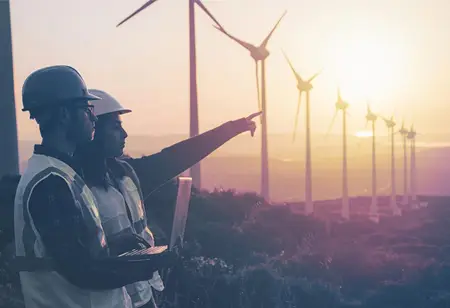Thank you for Subscribing to Energy Business Review Weekly Brief
Necessity Of AI For Renewable Energy!

By
Energy Business Review | Thursday, January 06, 2022
Stay ahead of the industry with exclusive feature stories on the top companies, expert insights and the latest news delivered straight to your inbox. Subscribe today.
Artificial intelligence (AI) technology manages decentralized networks during the global transition to renewable energy.
Decentralized, renewable sources will produce more energy as people advance toward a more electronic world, like microgrids, private solar panels, wind farms, and batteries.
As helpful as they are from a sustainability standpoint, they will complicate electricity infrastructure worldwide. Over the next few years, the increasing adoption of electric vehicles, the electrification of heating systems, and the widespread availability of dispersed energy resources (DERs) such as wind turbines and solar panels will need a sensitive balancing act to respond to supply demand without crumbling the grid.
Companies, governments, and separate consumers gradually use solar panels to produce their energy, which they then store in batteries and electric vehicles or remit to the grid. As per predictions, about 36 million assets, like solar panels, electric cars, and energy storage are expected to be added to the grid. Electric grids can be disturbed by multiple individual devices uploading and downloading electricity.
The dependence on a single utility to produce and transport electricity is dwindling, and utilities will have to change their business models. Ultimately, they won't be the only energy source. Instead, they'll be required to keep the grid balanced, transferring electrons from different sources and storage devices to supply power where it's needed every second.
AI will offset millions of assets on the grid.
Decentralized energy sources may move all the excess electricity they create to the grid with the support of AI software, and utilities can channel that power to where it's needed. Likewise, when demand is low, energy storage in industrial facilities, office buildings, residences, and cars can store excess energy, which AI can then utilize while generating is inadequate or impossible.
Numerous moving pieces require cooperation, forecasting, and optimization to maintain the grid balance. If companies think DERs as individual performers, a utility can be defined as a conductor who holds the orchestra in tune as AI assembles the symphony in real-time.
Thus, an AI-based system can transform the game. For example, shifting from an infrastructure-heavy system to one based on AI allows for predicting and controlling in seconds rather than days, leading to a more durable and agile grid in unforeseen catastrophes.
Therefore utilities, policymakers, and regulatory agencies must consider what part they want to perform in developing decentralized energy resources. Coordination and management will be critical for the patchwork of distributed energy producers. Utilities can head in this area as they confront a diminishing pool of customers buying electricity. More residencies and businesses turn into energy producers because of the rooftop solar panels and other technologies.






